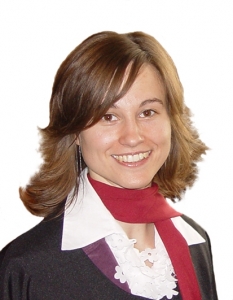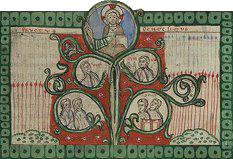Inter-cultural Transmission of Intellectual Traditions in the Middle Ages and the Early Modern Period. A comparative perspective
Participants
Lilly Stammler

These political conditions inevitably had a profound impact on intellectual life in the region. Aristocratic patronage of artistic production was increasingly hard to obtain. The major monasteries remained centres of literary activity. However, those monasteries which existed beyond the boundaries of fortified cities were becoming impossible to protect from the attacks of both Turks and local bandits. Perhaps the most famous example is the Monastery of Paroria, the celebrated centre of Hesychast teaching, which was set on fire and abandoned by its own inhabitants in the 1370s because it had become a permanent target for various enemies (described in the Life of St Romil of Vidin). In the 14th century even Mount Athos suffered constant attacks by the Catalan company and other brigands, as we learn from the Life of St Gregory of Sinai.
As a result of this highly unstable political environment, a whole generation of men-of-letters in the 14th century was subject to constant forced migration. Whether seeking quietude or just favourable conditions for work, hoping for patronage or fleeing for his life, the intellectual became perforce a relentless traveler, traversing state borders, as well as ethnic and language differences. The examples are too numerous to list exhaustively, but some of the most prominent itinerant scholars included: St Gregory of Sinai, St Gregory Palamas, Konstantine Akropolites, Patriarch Kallistus of Constantinople, Patriarch Euthymius of Tarnovo, etc. While students of Byzantium have already studied these men-of-letters individually, and their biographies and writings are more or less known, previous research has not considered them as a group, subjected to similar conditions, sharing the same cultural and religious environment, and connected to one another in various ways. In particular, previous scholarship has not considered the impact of forced migration on their intellectual development and its significance for their interaction.
The theme of this project concerns one category of migrating intellectuals in the Late Byzantine Empire: those moving across the frontiers between Byzantium and Medieval Bulgaria. The aim is to investigate Byzantine – Bulgarian intellectual relations in the 14th century under the aspect of the phenomenon of (forced) intellectual migration. To this end, a map will be constructed of the most popular destinations for literati and artists, and the geographic trajectories of the most important intellectuals of the time will be traced, taking into consideration the diverse affiliations and connections - familial, economic, social, etc. - that lay behind their intellectual interactions. A literary study of their works will reveal the dominant themes and literary models of the time and the patterns of influence and intellectual exchange. The research will explore the hypothesis that the expectations of the Greek-speaking and Bulgarian-speaking publics were not the same, with the result that writers were led to adjust their texts’ form and style, and even their content, in response to the audience for which they were writing.
I will focus mostly on the literary production of the period, written both in Greek and Slavonic. While central to the study are the works of historiography and hagiography, attention will also be given to the few surviving pieces of epistolography, as well as to a variety of other, non-literary evidence. Of special interest are texts which survive both in their Greek and Slavonic versions, and especially those, like the Life of St Gregory of Sinai, that exhibit considerable differences as between their two variants. In the final stage of the project, the manuscript tradition of the most popular texts will be under consideration, attempting to trace the consequent spheres of influence of 14th century literature, i.e. the further “migration” of the writings of the migrant intellectuals.
Lilly Stammler is a graduate of the University of Sofia (BA in Bulgarian philology and Serbian and Croatian philology, 2005) and she has a master degree in Byzantine Studies (MSt, Oxford University, 2007). She is currently a DPhil student at Oxford University working on a dissertation on the Lives of saints in Palaiologan times. Her sphere of interest is Medieval history and culture, especially in the region of the Balkans. She specializes in the field of Medieval Bulgarian and Byzantine literature, focusing on hagiography and historiography. She is also interested in Slavic paleography and textology, and computational approaches to the studies of Medieval Slavic cultures.



